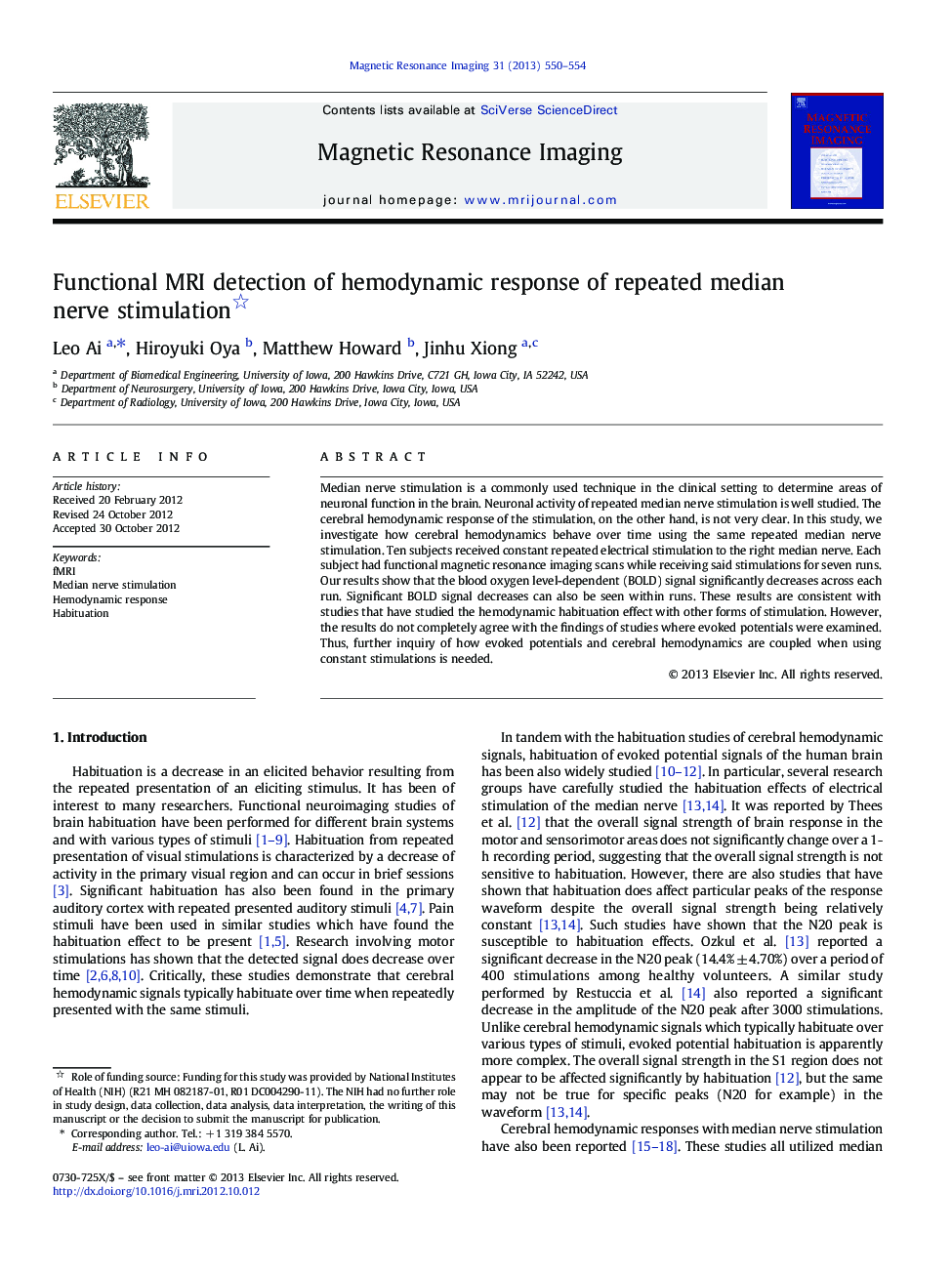| Article ID | Journal | Published Year | Pages | File Type |
|---|---|---|---|---|
| 1806775 | Magnetic Resonance Imaging | 2013 | 5 Pages |
Median nerve stimulation is a commonly used technique in the clinical setting to determine areas of neuronal function in the brain. Neuronal activity of repeated median nerve stimulation is well studied. The cerebral hemodynamic response of the stimulation, on the other hand, is not very clear. In this study, we investigate how cerebral hemodynamics behave over time using the same repeated median nerve stimulation. Ten subjects received constant repeated electrical stimulation to the right median nerve. Each subject had functional magnetic resonance imaging scans while receiving said stimulations for seven runs. Our results show that the blood oxygen level-dependent (BOLD) signal significantly decreases across each run. Significant BOLD signal decreases can also be seen within runs. These results are consistent with studies that have studied the hemodynamic habituation effect with other forms of stimulation. However, the results do not completely agree with the findings of studies where evoked potentials were examined. Thus, further inquiry of how evoked potentials and cerebral hemodynamics are coupled when using constant stimulations is needed.
